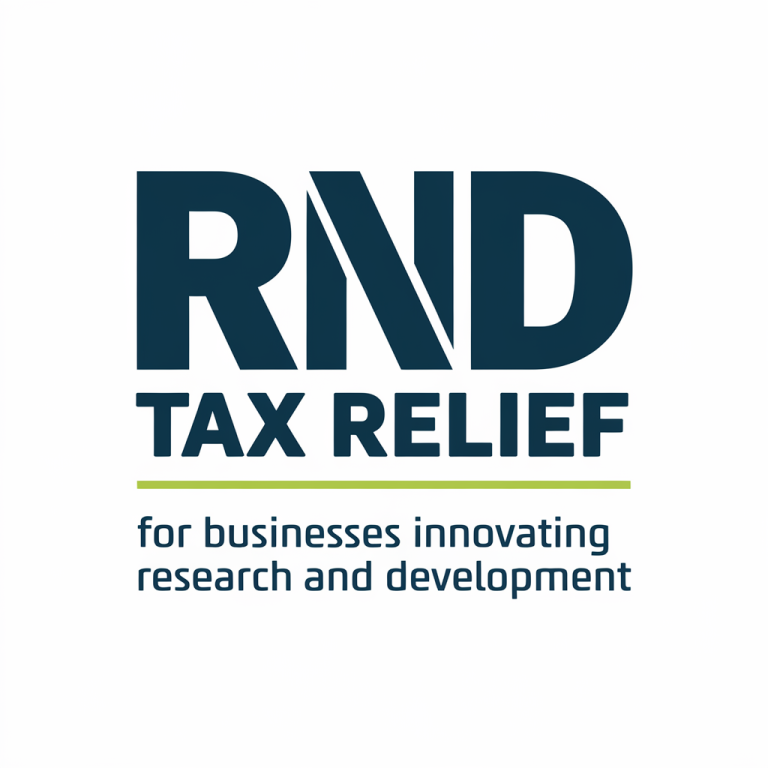Claiming R&D Tax Relief: What You Need to Know
Claiming r&d tax relief can be helpful for businesses to boost their innovation further with financial support from UK government announced schemes. Innovation is at the heart of business growth, and the UK government encourages companies to invest in research and development (R&D) by offering valuable tax relief.
If your company is pushing boundaries, improving products, or developing new processes, you may be eligible to claim relief on certain costs. Understanding the process can feel complex, but it’s worth taking the time to make a claim that could provide significant financial benefits.
What Costs Qualify for R&D Tax Relief?
Not every business expense will qualify, so it’s important to know what can be included in your claim. The key factor is whether your project seeks to overcome scientific or technological uncertainty. If so, the following costs may be eligible:
- Staff wages and employer NICs for those working on R&D
- Subcontractor and freelancer costs (some restrictions apply)
- Materials and consumables used in the R&D process
- Software required for development
- Utilities such as power and water directly used in the R&D activities
If your company is spending money to resolve technical challenges, it’s worth reviewing whether these costs could form part of a claim.
Why Make a Claim?
R&D tax relief isn’t just about reducing your tax bill; it can provide a cash injection that helps fuel further innovation. Companies investing in R&D often reinvest their savings into hiring new staff, buying equipment, or funding additional projects. The relief can either reduce your corporation tax liability or, for some companies, result in a payable credit. It’s a financial boost that could make a real difference to your business.
Are You Eligible to Claim?
Businesses in a wide range of industries can qualify, from software development and engineering to life sciences and manufacturing. The key test is whether your company is tackling technical uncertainties. Even if a project is unsuccessful, the work undertaken to try and find a solution may still be eligible.
Small and medium-sized enterprises (SMEs) can claim under the SME R&D tax relief scheme, while larger companies claim under the Research and Development Expenditure Credit (RDEC) scheme. Recent changes have also introduced a simplified approach for some SMEs.
Why is the R&D Tax Relief Regime Changing?
The government has been making adjustments to the R&D tax relief scheme to improve compliance and reduce the risk of fraudulent claims. While the relief remains generous, there are new requirements to ensure claims are legitimate. These changes are designed to make the system more efficient and targeted towards genuine innovation.
How to Claim R&D Tax Relief
The process involves several key steps:
- Identify qualifying projects: Review past and ongoing projects to determine which activities qualify.
- Gather financial records: Identify costs that can be included in the claim.
- Prepare a technical report: Explain how your project sought to overcome technological uncertainty.
- Submit the claim: Include the necessary details within your corporation tax return.
- HMRC review: In some cases, HMRC may request additional information or clarification.
Preparing a strong claim requires attention to detail. A well documented submission ensures HMRC can see the value of your work, reducing the likelihood of queries or delays.
How Much Does It Cost to Claim R&D Tax Relief?
The cost of making a claim depends on how you go about it. If you prepare the claim in-house, the main expense is your team’s time. Some businesses choose to work with advisers who charge a percentage of the tax relief received or a fixed fee. While there is a cost involved, the benefit of a successful claim often far outweighs the expense.
Changes to R&D Tax Relief from 1 April 2024
The rules around R&D tax relief have seen several updates, and from April 2024, further changes will take effect. These include:
- A single scheme for SMEs and large companies: The SME and RDEC schemes are merging, streamlining the process.
- Increased focus on UK based R&D: More scrutiny is being placed on ensuring claims reflect work undertaken in the UK.
- More detailed reporting requirements: Claimants must provide a breakdown of costs and submit additional documentation to support their claim.
Companies should ensure they are up to date with these changes to avoid any surprises when making a claim.
The R&D Tax Claim Process
Making an R&D tax relief claim requires a structured approach. Here’s how businesses typically progress through the process:
Information Gathering and Analysis
Start by identifying projects that involved technological or scientific advancements. Work closely with finance teams to extract relevant cost data and document project details thoroughly.
R&D Tax Relief Rates Changing
The rates of relief available depend on your company’s size and circumstances. Under the merged scheme, rates may be adjusted to align with government priorities. Keeping up to date with these changes is crucial to maximise your claim.
Technical Changes to the R&D Tax Relief
From April 2024, new requirements include:
- Pre-notification of claims: Some businesses must notify HMRC before submitting a claim.
- More stringent checks: Expect greater scrutiny of eligibility and supporting evidence.
- Focus on software and cloud computing costs: Expanded categories allow certain cloud computing expenses to be included.
These updates mean businesses need to be more diligent in record-keeping and compliance.
Timing Example
A company working on a two-year development project could claim costs for both financial years, even if the product is not yet on the market. Timing is crucial, as claims must be made within two years of the end of the relevant accounting period.
Take Action Now
R&D tax relief provides a valuable opportunity for businesses investing in innovation. With changes coming into effect, now is the time to review your eligibility and ensure you’re making the most of what’s available.
Don’t leave money on the table start gathering the information you need to make a successful claim. If you need guidance, consider speaking with a professional to make sure your claim is as strong as possible.
By taking action now, you can unlock financial support to help your business continue growing and innovating.




![Accounting Treatment for R&D Tax Relief: Expert UK Guide [2025] 4 Accounting Treatment for R&D Tax Relief](https://rndtaxrelief.co.uk/wp-content/uploads/2025/04/Accounting-Treatment-for-RD-Tax-Relief-768x432.webp)

